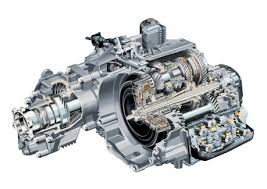Mobile:+86-311-808-126-83
Email:info@ydcastings.com
types of molds in casting
Types of Molds in Casting
Casting is a manufacturing process in which liquid material, usually metal, is poured into a mold to create a specific shape as it solidifies. The type of mold used can significantly affect the properties of the final product. In this article, we will explore the various types of molds commonly used in casting and their distinct characteristics.
1. Sand Molds
Sand molds are among the most frequently used types of molds in casting. Made from a mixture of sand, clay, and water, these molds are inexpensive and can be formed rapidly. Sand molds can be created in two main ways green sand molds, which are made from moist sand, and dry sand molds, which are baked to remove moisture. Green sand molds offer excellent collapsibility, making them easier to remove after the casting is complete. However, dry sand molds usually provide better surface finish and dimensional accuracy. Sand molds can be utilized for casting a wide variety of metals, including aluminum, iron, and brass.
2. Investment Molds
Investment casting, also known as lost-wax casting, utilizes a mold created from a wax pattern. The process begins by creating a wax model of the desired product, which is then coated with a ceramic material and heated to remove the wax—leaving a hollow mold. This type of mold provides incredible detail and a smooth surface finish, making it ideal for intricate designs and complex geometries. Investment casting is particularly popular in industries such as aerospace and medical, where precision is paramount.
3. Shell Molds
types of molds in casting

Shell molds are made by applying a thin layer of sand and resin to a heated metal pattern, forming a shell around it. Once the shell is cured, it is removed from the pattern, and the mold is subsequently assembled for pouring. This method results in molds that are durable and can withstand higher temperatures, allowing for better casting of metals with high melting points. Shell molds also yield a fine surface finish and improved dimensional accuracy compared to traditional sand molds.
4. Die Molds
Die casting involves forcing molten metal into a mold cavity under high pressure, and the molds used in this process are referred to as die molds. Made from hard steel, die molds are designed for high-volume production and can produce parts with excellent surface finish and dimensional precision. There are two main types of die casting hot chamber and cold chamber. Hot chamber die casting is suitable for metals with low melting points, while cold chamber is used for higher melting point metals. This method is common in automotive and appliance manufacturing.
5. Permanent Molds
Permanent molds are made from metals and can be reused multiple times, making them cost-effective for high-volume production runs. The process involves pouring molten metal into the mold, allowing it to cool, and then removing the finished product. Permanent molds can produce castings with excellent surface finishes and tight tolerances but are typically limited to simpler shapes compared to other mold types.
Conclusion
Understanding the different types of molds in casting is essential for manufacturers seeking to optimize production processes and achieve desired characteristics in their final products. Each mold type has its benefits and drawbacks, depending on factors such as the complexity of the design, material being used, and production volumes. By selecting the appropriate mold type, manufacturers can enhance efficiency and improve the quality of their cast components, meeting the precise needs of their industries.
-
Why Should You Invest in Superior Pump Castings for Your Equipment?NewsJun.09,2025
-
Unlock Performance Potential with Stainless Impellers and Aluminum End CapsNewsJun.09,2025
-
Revolutionize Your Machinery with Superior Cast Iron and Aluminum ComponentsNewsJun.09,2025
-
Revolutionize Fluid Dynamics with Premium Pump ComponentsNewsJun.09,2025
-
Optimizing Industrial Systems with Essential Valve ComponentsNewsJun.09,2025
-
Elevate Grid Efficiency with High-Precision Power CastingsNewsJun.09,2025











